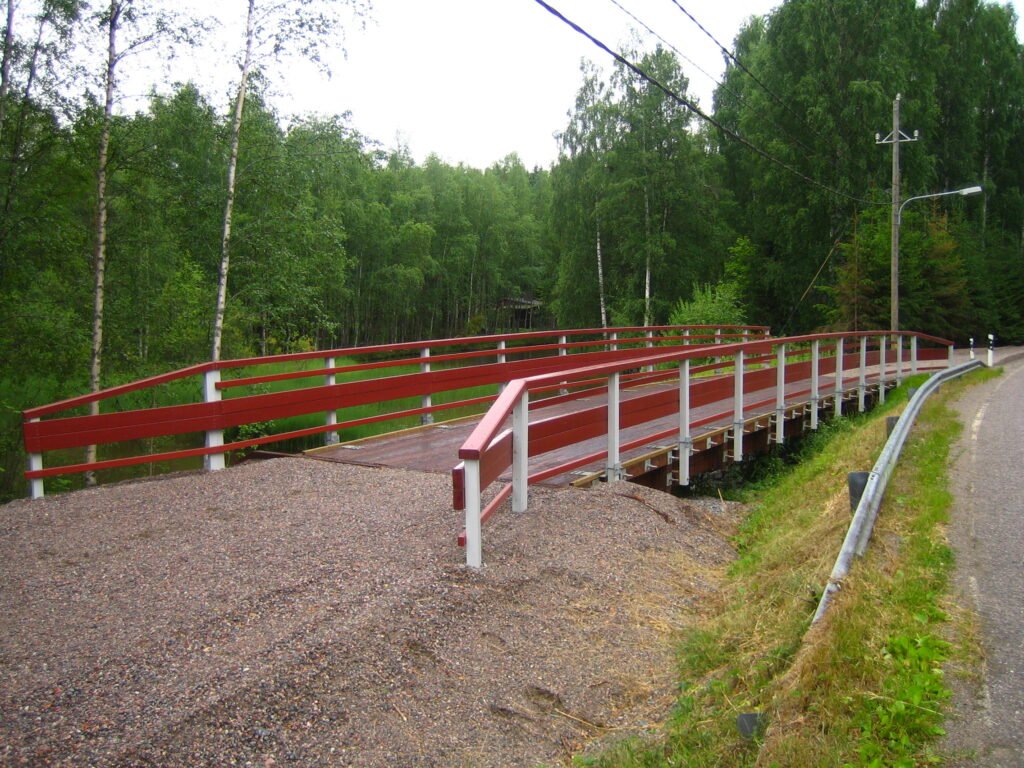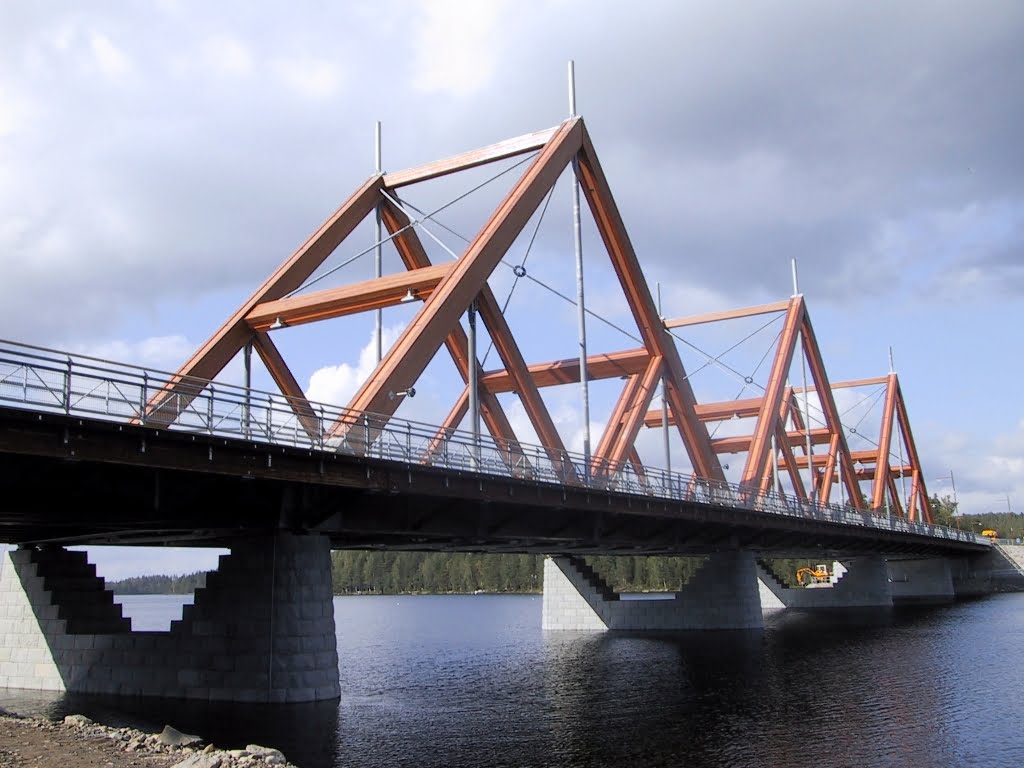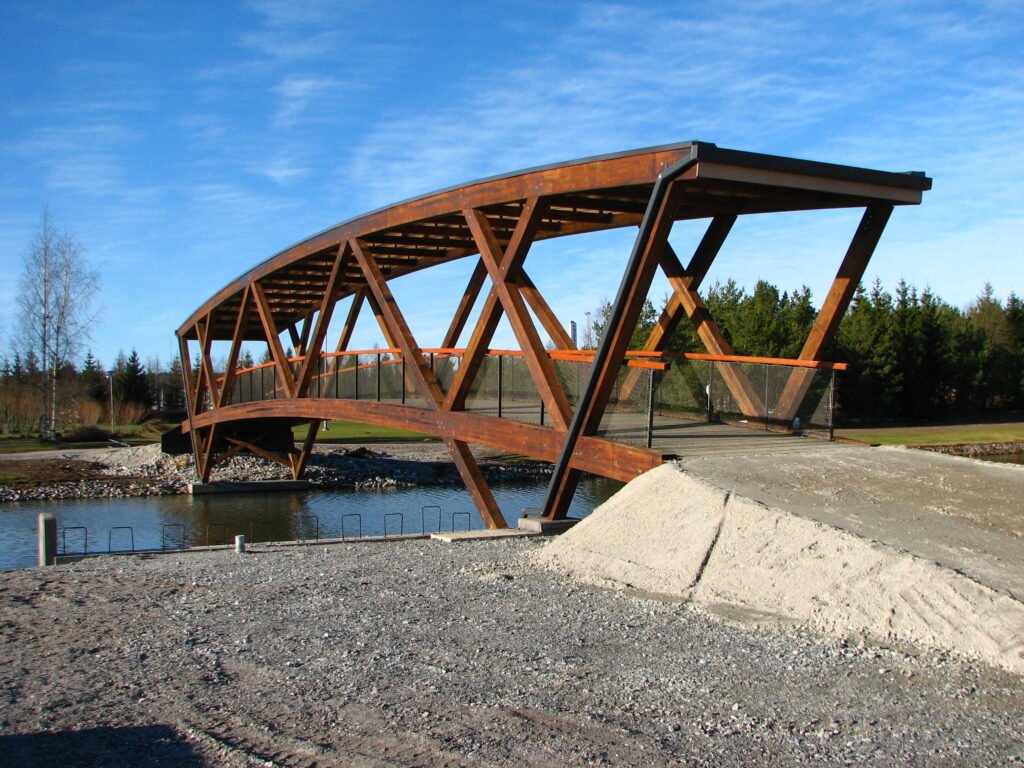Different types of wooden bridge
Beam bridge

Beam bridges are the most frequently used type of construction. The load-bearing structure is formed from laminated wood beams along the length of the bridge on which the deck construction is built. The most economic areas of use are spans of 4 to 20 metres for road bridges and 3 to 30 metres for lightweight traffic.
Trussed bridge
Trussed bridges were the most common type before the advent of laminated timber. Nowadays, they are used mainly for museum structures and in special situations.
Arched bridge

Arched bridge load-bearing construction consists of glued laminated timber made into arches. The arch can be entirely below the bridge deck, in which case there are several arches, or partially below the deck, or entirely above the deck. The spans of arched bridges can be as much as 100 metres.
Composite bridges

Composite bridges represent new building technology. In these, wooden beams and concrete decks are joined together with special ‘adhesive’ materials to form a functional structure. Cross-stressed bridges represent popular new bridge technology. The basic type is a flat panel where the longitudinal planks or laminated beams are perforated with steel cross ties to make a single uniform panel. This type of bridge is suitable for spans of 3 to 36 metres. Versowood has developed a grid-like deck from this basic structure by combining laminated beams with sawn goods. This increases the area of economic use to spans of 30 metres.
Covered bridge

Covered bridges are normally trussed bridges where the roadway is supported by the bottom boom of the truss and a roof is supported by the upper boom. Covered bridges are particularly suited to lightweight traffic and can have spans of up to 100 metres.
Photos: Versowood Oy